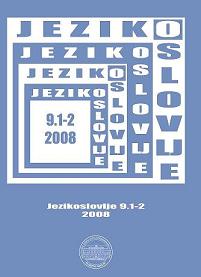On the marginality of lexical blending
On the marginality of lexical blending
Author(s): Rita Brdar-Szabó, Mario BrdarSubject(s): Language and Literature Studies
Published by: Filozofski fakultet, Sveučilište Josipa Jurja Strossmayera, Osijek
Keywords: lexical blending; contrastive linguistics; motivation; constructional schema; conceptual integration; word formation; compounding; clipping; truncation; lexical borrowing
Summary/Abstract: In spite of a recent surge of interest in it, blending remains among the most poorly understood and elusive word formation processes. What almost everybody seems to be agreed on is that, although it appears to be attested in many languages, it is doubtlessly a marginal morphological process. However, a closer look at cross-linguistic data reveals that there are striking differences between individual lan-guages concerning the degree of its marginality. The goal we set ourselves in the present paper is to motivate the observed cross-linguistic differences by discussing two clusters of factors that may play an important role in making blending more or less marginal, i.e. serve as functional prerequisites for the spread of blends. One of these are certain constructional traits of the languages involved. What we primarily have in mind here is the prominence of the constructional schemas for two other word formation processes – compounding and clipping. The other cluster of factors involved here has to do with the dynamics and flexibility in the lexicon, viz. the speed with which foreign lexemes are adapted and become near-native elements of the lexical stock. Our claim is that the less open and flexible a language is in this respect, the more marginal the blends that are found (if any) will tend to be.
Journal: Jezikoslovlje
- Issue Year: IX/2008
- Issue No: 1+2
- Page Range: 171-194
- Page Count: 24
- Language: English

